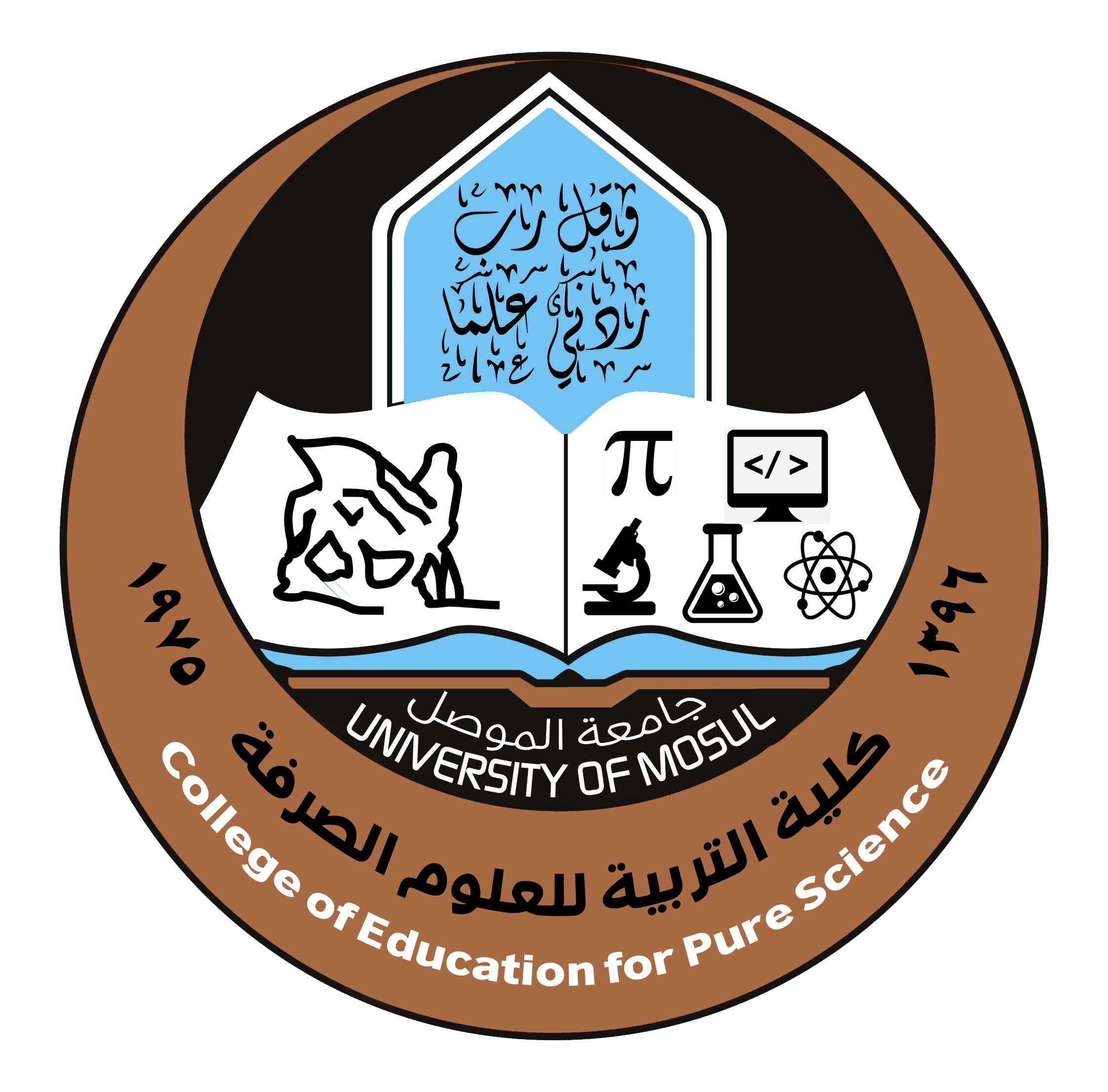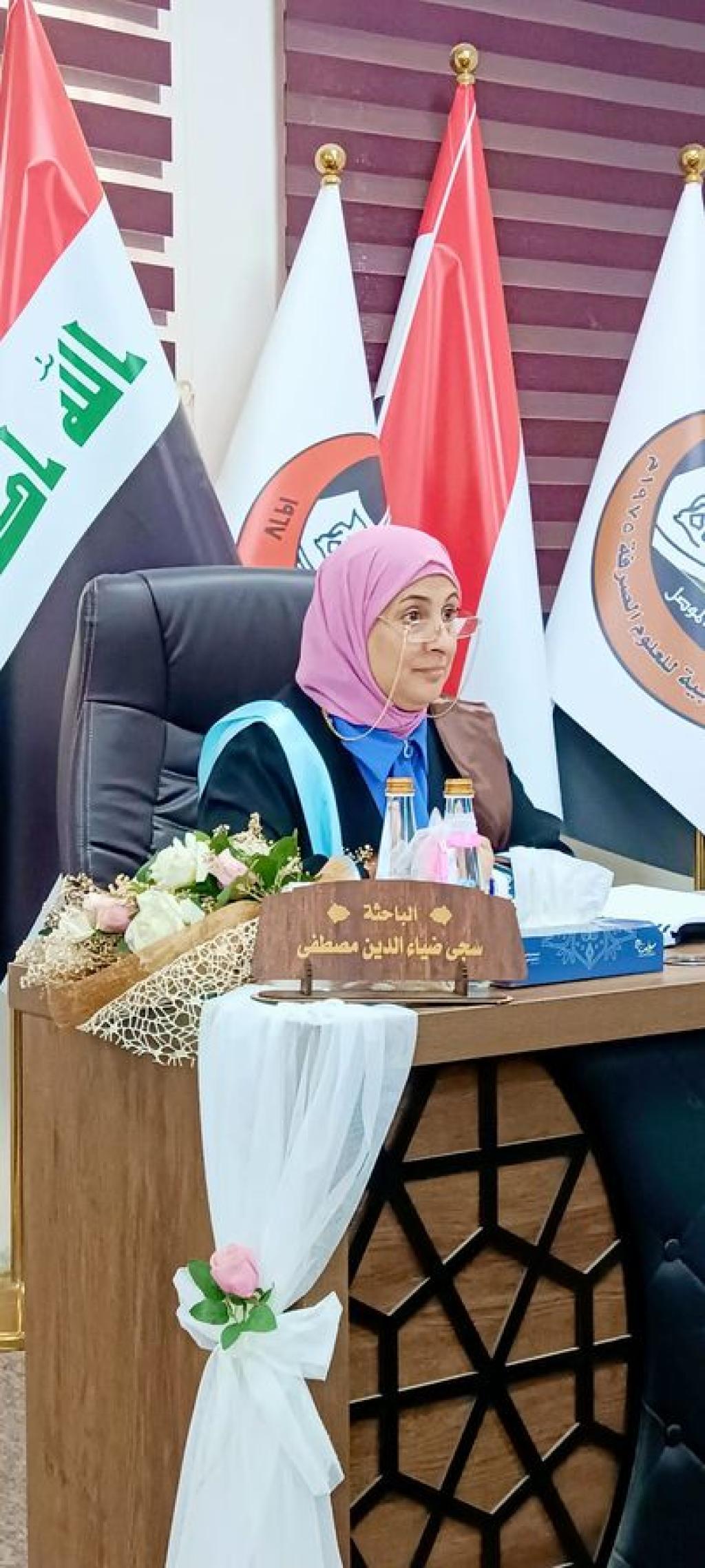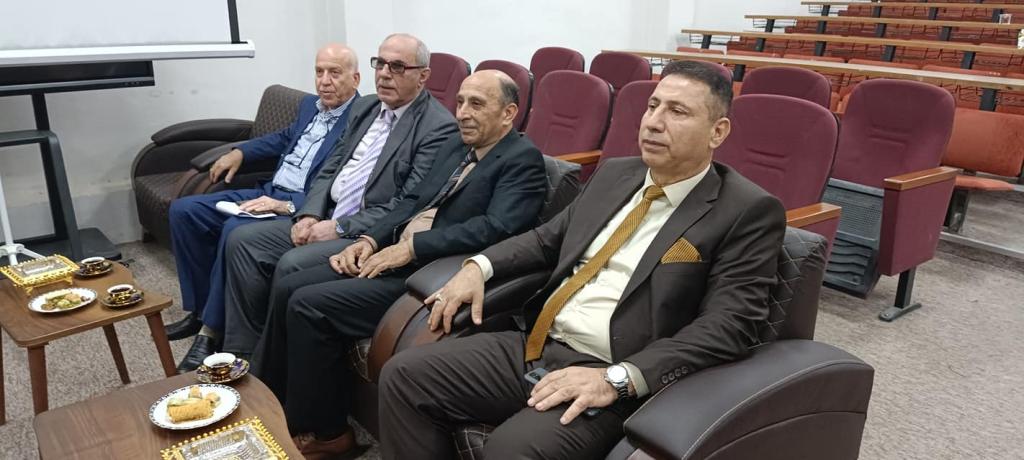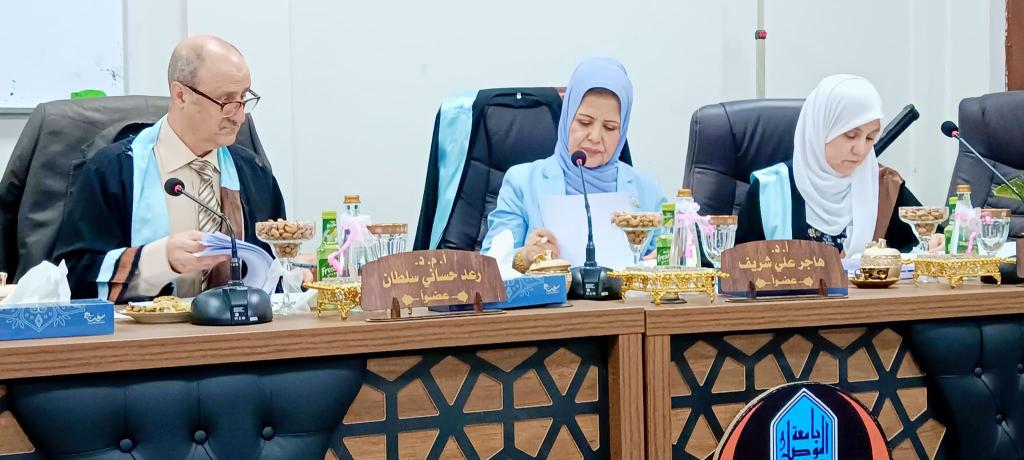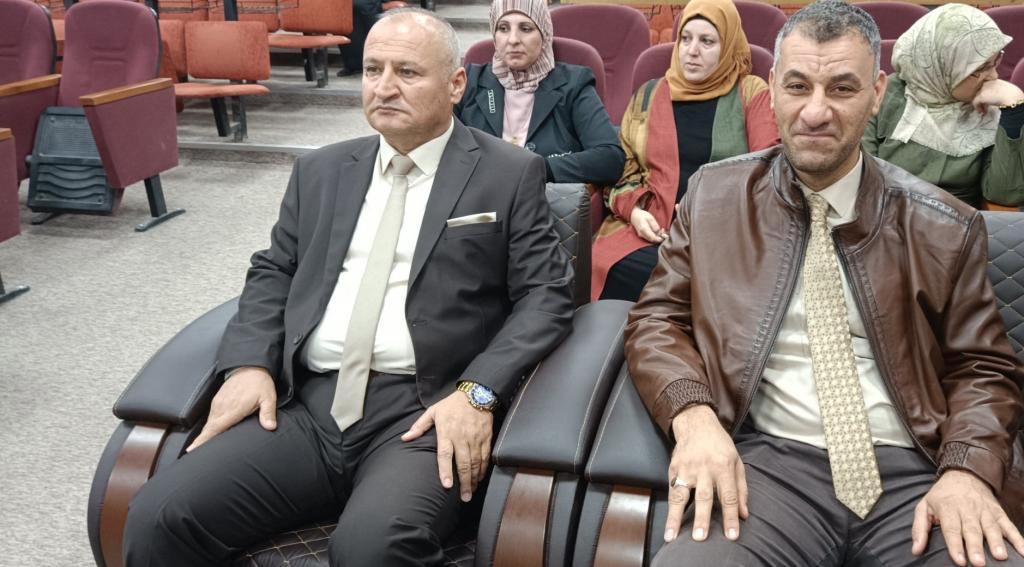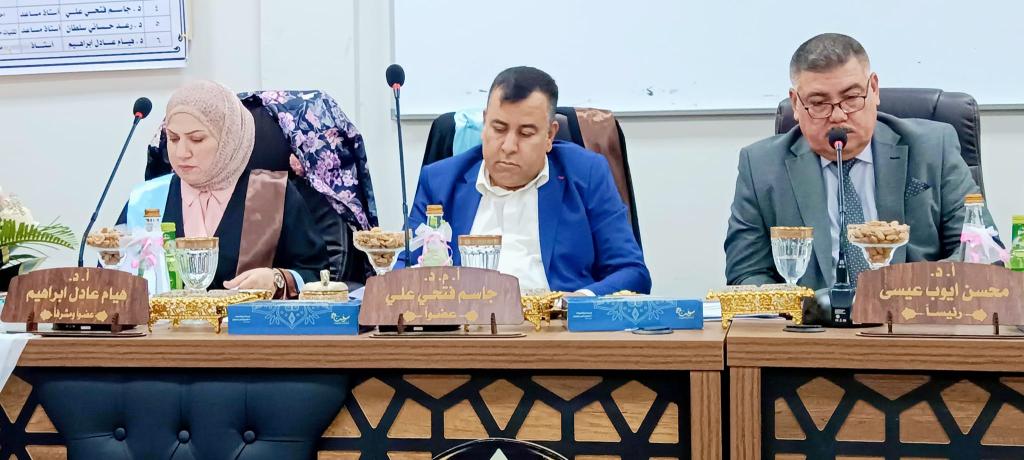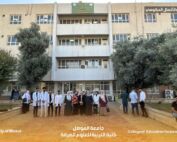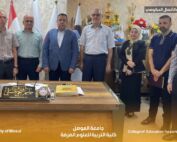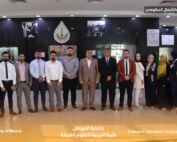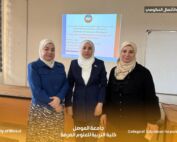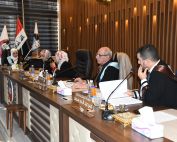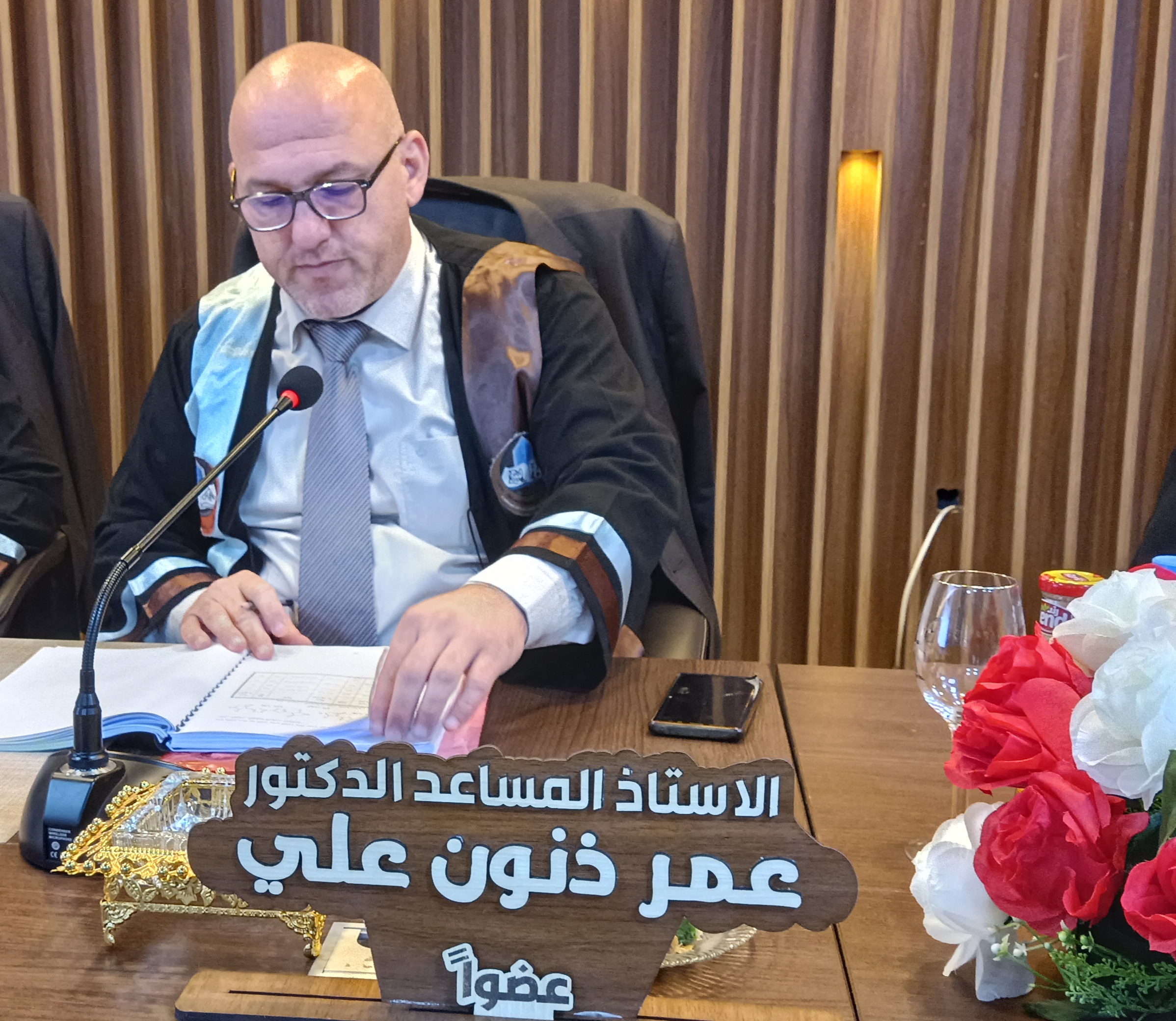10 November، 2022
PH.D. Dissertation Viva-Bioilogy Department
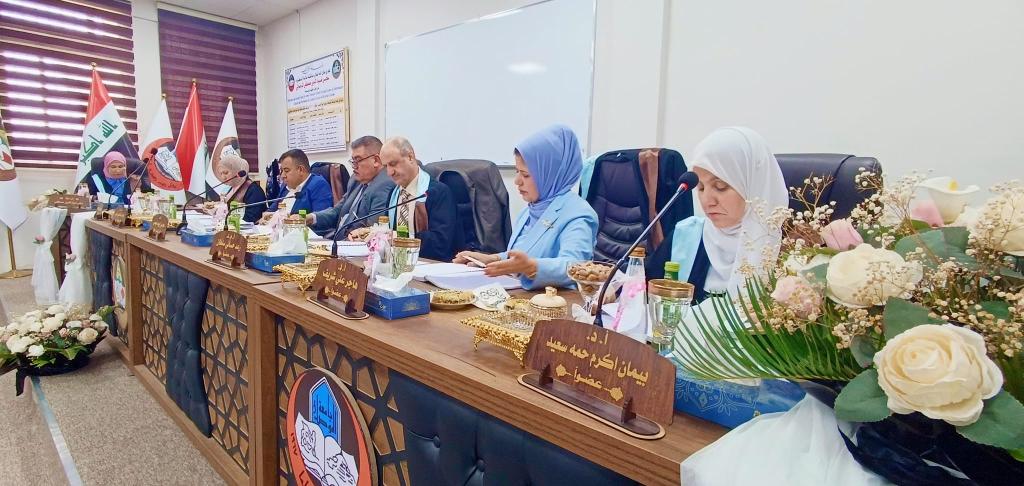
PH.D. Dissertation Viva in the College of Education for Pure Science entitled ” Molecular and genetic study for some virulence factors encoded genes of Enterobacter cloacae and determined its location (locus) in bacterial genome “The College of Education for Pure Science, University of Mosul, has done the PH.D. Dissertation Viva entitled ” Molecular and genetic study for some virulence factors encoded genes of Enterobacter cloacae and determined its location (locus) in bacterial genome “,On Thursday, November 10, 2022, the respected Dean of the College, Assistant Professor Dr. Qais Ismail Ibrahim, the Honorable Scientific Associate and Administrative Associate, the Honorable Head of the Department of Biology, and a number of the college’s teachers were attended the viva. The current study, presented by the PH.D. Student Saja Dhiaa Al-Deen Mustafa Al-Radhwany in the Department of Biology, focused on Enterobacter cloacae bacteria, the most dangerous cause of nosocomial infection, which is a major cause of urinary tract infections (UTI) or infection resulting from the use of the catheter.
- cloacae is opportunistic pathogen that can cause a wide range of infections as urinary tract infection, respiratory infection wound and burned infections, intra abdominal infections and skin and soft tissue infection.The study included three topics, the first topic: More than one hundred bacterial samples were collected from different pathological sources for the period from September 2020 to January 2021, twenty-five of them were E. cloacae, the samples were inoculated in Brain heart infusion/Agar (BHI) medium as a transport medium, the bacterial samples were phenotypically diagnosed using microscopic and cultured diagnostic tests, molecularly, and some factors of virulence possessed by this bacteria were identified, including its production of biofilm and other factors.The second topic: From the bacterial samples understudy had been isolated. We selected two isolates of E. cloacae in the rate of 8% to confirm the diagnosis using the VITEK2 System device, as the purity of bacterial isolates was 95% and 97%, the diagnosis of samples was confirmed by biochemical tests, the most important of which is the bacteria’s possession of the enzyme ornithine decarboxylase (ODC). At the same time, the results of the sensitivity examination of the bacteria isolates under study showed sensitivity and resistance of bacteria to some antibiotics, and they were more sensitive to Cefuroxime, Cefuroxime Axetil, Cefoxitin, Ceftazidime, Ceftriaxone, Ertapenem, Imipenem, Meropenem, Amikacin, Gentamicin, Ciprofloxacin and Trimethoprim, and more resistant to Piperacillin and Cefixime.The third topic: the molecular topic, the studies used the polymerase chain reaction (PCR) technique using 16s ribosomal RNA gene to confirm the phenotypic diagnosis and the diagnosis using the Vitic device, as a result of the molecular diagnosis showed the studied samples that the bacteria are of the type Enterobacter cloacae, with percentages ranging between 98%-99% with similar standard pathogens. In theNCBI-Bank, in the studied isolates where recorded in terms of evolutionary development and the comparison have been done between them and the isolates of the same species around the world, based on the results of analysis to the sequencing nitrogen bases and by identifying the genetic tree, as the mutations, that occur in the genome of bacterial isolates were identified with an indication of the type of mutation, whether they were transition or transversion mutation as point mutation used as taxonomic trait by a small change in the sequence of the nitrogenous base in program. By cultivating the bacterial isolates on Congo red agar medium, the colonies growing on this medium and appeared in bright black color. Then the above mentioned genes were determined by multiple PCR technique, as the studied bacterial isolates showed the presence of both CsgA and CsgD genes within the bacterial genome.The Viva committee was chaired by Prof. Dr. Muhsen Ayoob EISAA / University of Mosul/College of Science and the membership of Prof. Dr. Hajer Ali Shareef / University of Kirkok/College of Science, Prof. Dr. Payman Akram Hama Saeed / University of Sallah al-deen –Erbil /College of Education, Asst. Prof. Dr. Jasim Fathii Ali / University of Mosul/College of Education for Pure Science, Asst. Prof. Dr. Raad Hasaani Sultan / University of Mosul /College of Education for Pure Science and under the supervision and membership of Prof. Dr. Hiyam Adel Ibrahim Al-Taee / Dean of College of Science /University of Mosul.
